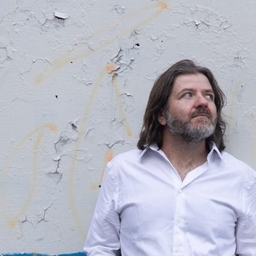
Colin Dickey
Author and Writer at Freelance
I'm not here ever; if you need me I'm on Bluesky: https://t.co/TvqWxb2OGl
Articles
-
2 months ago |
nationalgeographic.fr | Colin Dickey |Wilhelm Dege Papers
L’archipel arctique du Svalbard est l’un des lieux les plus reculés sur Terre. Situé à plus de 800 kilomètres du nord de l’Europe et presque aussi loin du pôle Nord, ses terres sont restées inhabitées jusqu’à la fin du 19e siècle. Cela, si l’on oublie les quelques essais manqués des chasseurs de baleines pour attendre la fin de l’hiver, qui se sont presque tous soldés dramatiquement. Le nom d’origine de cet archipel était Spitsbergen ce qui, traduit du néerlandais, signifie « montagnes pointues ».
-
2 months ago |
nationalgeographic.com | Colin Dickey
The Arctic archipelago of Svalbard is one of the most remote places on earth—more than 500 miles north of Europe, and about as far from the North Pole, it was entirely uninhabited by humans until the late 19th century, aside for a few early attempts by whalers to overwinter that mostly ended in disaster.
-
2 months ago |
atlasobscura.com | Colin Dickey
In late summer of 1937, a man named Louis E. Hammond emerged from the tupelo gums and cypresses of the North Carolina wilderness with a 21-pound piece of quartz, onto which had been inscribed a nearly indecipherable, enigmatic message. The Californian had been traveling through on vacation when he’d stopped at Edenton, on the northern shore of Albemarle Sound, near the mouth of the Chowan River.
-
2 months ago |
newrepublic.com | Colin Dickey
W.G. Sebald’s premature death from a heart attack, in December 2001, at 57—months after the publication of his novel Austerlitz propelled him to the height of his literary fame—has left his readers wanting more, and ever since, his publishers have increasingly delved deeper into his oeuvre for posthumous releases. Six full-length books have already appeared in English since his death, and now, 23 years after his death, we have the seventh—and perhaps last: Silent Catastrophes: Essays.
-
2 months ago |
yahoo.com | Colin Dickey
W.G. Sebald’s premature death from a heart attack, in December 2001, at 57—months after the publication of his novel Austerlitz propelled him to the height of his literary fame—has left his readers wanting more, and ever since, his publishers have increasingly delved deeper into his oeuvre for posthumous releases. Six full-length books have already appeared in English since his death, and now, 23 years after his death, we have the seventh—and perhaps last: Silent Catastrophes: Essays.
Try JournoFinder For Free
Search and contact over 1M+ journalist profiles, browse 100M+ articles, and unlock powerful PR tools.
Start Your 7-Day Free Trial →X (formerly Twitter)
- Followers
- 10K
- Tweets
- 1K
- DMs Open
- Yes